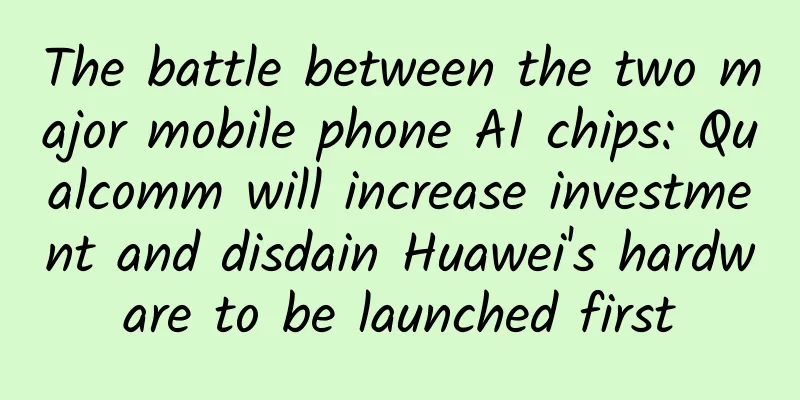What's the secret behind the numbers on the bottom of bottled water? Many people use it wrongly...

|
We drink plastic bottled water and bottled beverages every day. Have you ever noticed that there are different numerical labels on the bottom of bottled water? There is a number circled in a triangle with an arrow on the bottom of each bottle of bottled water, from 1 to 7, representing the material and safety of the bottle respectively. In this issue, let’s unlock the secret of the numbers at the bottom of bottled water! What do these numbers mean? What safety tips do they contain? "1" represents PET (polyethylene terephthalate): mineral water, carbonated and functional beverages mostly use this material, and long-term repeated use is not recommended. PET was originally used as a man-made fiber. Many of the clothes we wear are made of polyester. It was not until 1976 that PET was used to make plastic containers, the most common of which were mineral water bottles and carbonated beverage bottles. PET bottles have excellent hardness and toughness, are light in weight, have good transparency, are easy to carry and use, consume little energy during production, and are airtight, non-volatile, and acid and alkali resistant, making them a good packaging material for carbonated beverages . However, PET bottles cannot be recycled to hold hot water because the heat resistance temperature of PET is only 70℃ . It is only suitable for warm drinks or cold drinks. It is easy to deform when filled with high-temperature liquids or heated, and substances harmful to the human body will be dissolved. Therefore, after we have used up PET bottles, we should throw them away or sell them and let specialized companies recycle them. Do not use them as water cups or as storage containers , such as for wine, oil, etc. "2" stands for HDPE (high-density polyethylene): often seen in white medicine bottles, cleaning supplies, and bath products. It is difficult to clean and is not recommended for recycling. PE refers to polyethylene, which is the first of the four general-purpose plastics and is currently the most widely used and produced plastic. There are many varieties of polyethylene, and HDPE is high-density polyethylene. HDPE has excellent dielectric properties, especially high insulation dielectric strength, making it very suitable for use as wires and cables. In addition, HDPE does not absorb moisture and has good water vapor resistance and good impact resistance. Common white medicine bottles and containers for detergents, shampoos, shower gels, cooking oils, pesticides, etc. are mostly made of HDPE. If these containers are not cleaned thoroughly, it is best not to recycle them. HDPE can withstand high temperatures of 110°C, but it is not recommended to be used as a water cup . Currently, most packaging bags used in supermarkets and shopping malls are made of HDPE. Plastic bags marked for food can be used to hold food. "3" stands for PVC (polyvinyl chloride): it is rarely used in food packaging, and it is recommended not to buy beverages packaged in this material. PVC is polyvinyl chloride, one of the four general-purpose plastics. Its biggest feature is its low price. PVC has excellent plasticity and is mostly used to make water pipes, raincoats, school bags, building materials, plastic films, plastic boxes, etc. PVC can only withstand heat of about 80℃. It is easy to precipitate toxic substances at high temperatures or in oily environments , so it is rarely used in food packaging. The toxic substances produced by PVC plastic products come from two aspects: one is the single molecule of vinyl chloride that is not completely polymerized during the production process, and the other is the harmful substances in the plasticizer. "4" stands for LDPE (low-density polyethylene): cling film, plastic film, etc. Harmful substances will be produced at high temperatures, so it cannot be used at high temperatures. The HDPE mentioned above is high-density polyethylene, and the LDPE here is low-density polyethylene. The main feature of LDPE is that it has good molding and processing properties. Most of the plastic bags we see everywhere are made of LDPE. In addition, common cling film and plastic film are also made of this material. LDPE will melt when the temperature exceeds 110°C , leaving some plastic preparations that cannot be decomposed by the human body. Therefore, before putting food into the microwave, we must first remove the plastic wrap or packaging bag to prevent harmful substances from entering the human body through the food. "5" stands for PP (polypropylene): the only (plastic) material that can be put in the microwave and can be reused after careful cleaning. PP is polypropylene, one of the four most common plastics. This plastic is mostly used to make cups, buckets, trash cans, baskets, baskets and microwave food containers. PP has a melting point of up to 167°C and is non-toxic and odorless, so it is the safest to use it to hold food or water. "6" - PS (polystyrene) , which is heat-resistant and cold-resistant, and cannot be used in microwaves. PS is the last of the four major general-purpose plastics and is called polystyrene. PS is mostly used to make building materials, toys, stationery, rollers, as well as cups for drinks in fast food restaurants or disposable tableware. The most common ones are bowl-shaped instant noodle boxes and fast food boxes . This material will also release harmful chemicals under high temperature or acid-base environment , so we should avoid using fast food boxes to hold hot food, and do not use microwave ovens to cook bowls of instant noodles. Avoid using the microwave like this! You can heat the food in your own bowls and dishes. "7" - PC and other types , used to make baby bottles, space cups, and space bottles. However, water cups made of this material can easily release toxic substances such as bisphenol A at high temperatures, which is harmful to the human body . Do not heat this type of water cup when using it, and do not expose it to the sun. Plastics labeled 07 are other types of plastics excluding the first six types of plastics. The one we are more exposed to should be PC polycarbonate. Common applications of this material include optical discs, eyeglass lenses, water bottles, bulletproof glass, goggles, headlights, etc. Baby bottles and space cups made of PC are controversial due to the residual bisphenol A. For safety reasons, we should be extra careful when using this type of plastic container. |
<<: Don’t scratch your head, you have been “killed” by big data…
>>: If your ears itch but you can't find anything to take out, beware of problems →
Recommend
Himalaya product operation analysis
In my childhood memory, there was always a radio ...
This drink doesn't taste sweet, but it has a very high blood sugar-raising capacity! Many people don't know this and still drink it every day
Beer, grilled skewers, crayfish, and a few good f...
In summer, “even if there is no disease, one-third of the body is weak”. A few minutes of heart-nourishing and blood-exercises every day will help you spend the summer safely!
Entering summer, many people have this experience...
Keywords in the 4G virtual operator era: opportunities and challenges coexist
Introduction: In 2014, the 4G industry developed ...
New way to play group lottery activities!
Group buying is regarded as a social method under...
Is it reliable to take Western medicine while drinking Chinese medicine?
This is the 4648th article of Da Yi Xiao Hu When ...
How much does it cost to develop a shopping mall mini program in Liaocheng?
There is no fixed price for the development of th...
How will Youpengpule start its three engines with 2 billion yuan in hand?
In the Internet TV industry, Youpengpule is consi...
Kuaishou advertising introduction, Kuaishou advertising display, Kuaishou advertising price
Kuaishou is a well-known short video application ...
2018 Tik Tok complete analysis report!
I haven't written anything seriously for a lo...
Does using SSD just improve the read and write speed? Data security is more important
Perhaps it is because SSD (solid state drive) has ...
There is insufficient balance for the Spring Festival holiday. How can I correctly start the return mode?
The Spring Festival holiday is coming to an end, ...
How to quickly familiarize yourself with the promotion rules of Douyin and Zhihu?
When we are involved in promotion and marketing, ...
Practical transfer! What should I do if I have coughs and pains after turning negative?
If you have questions about the coronavirus Espec...
What new hot spots have been brought by international designers' performances?
With the opening of the Shanghai Auto Show, car d...









